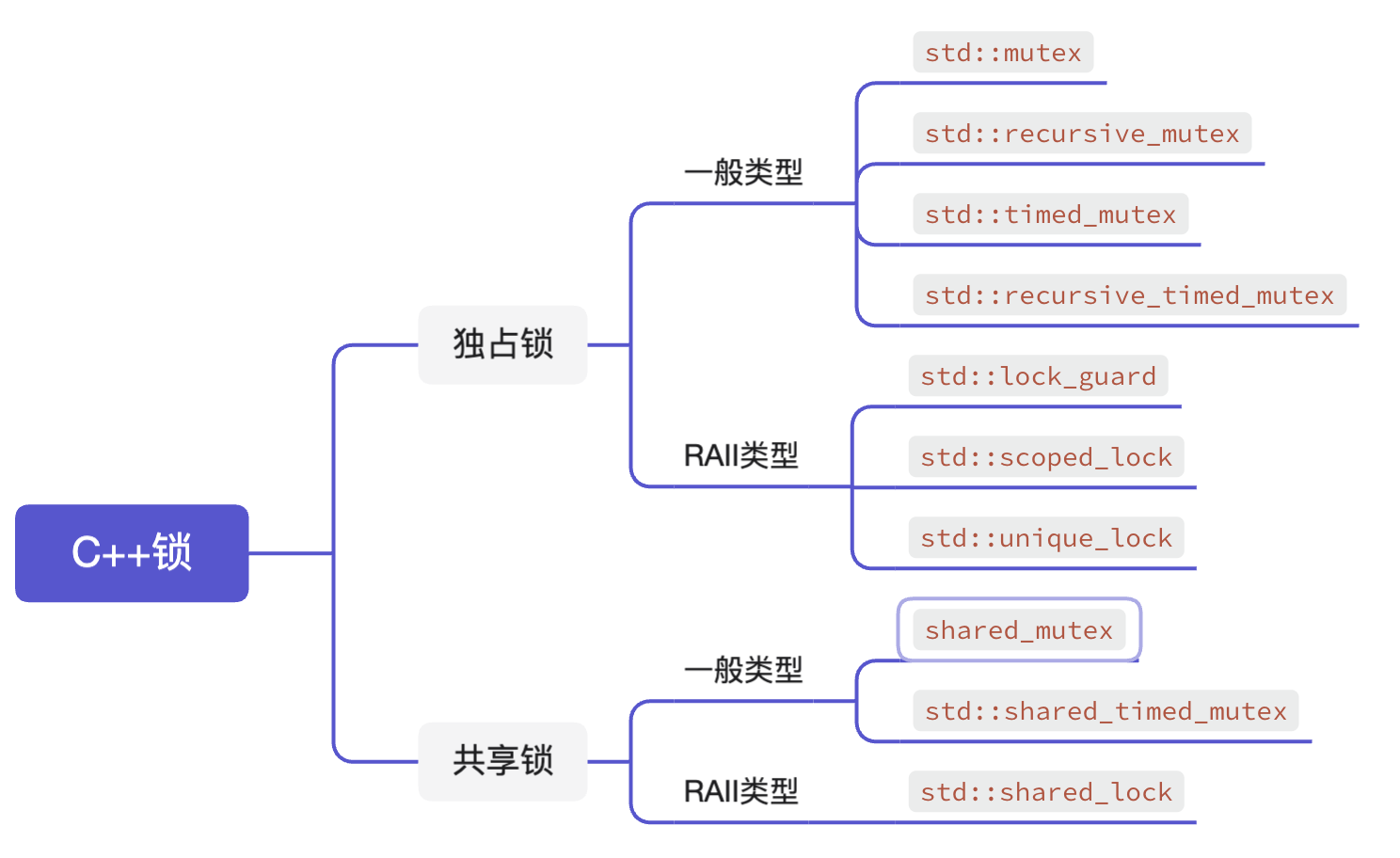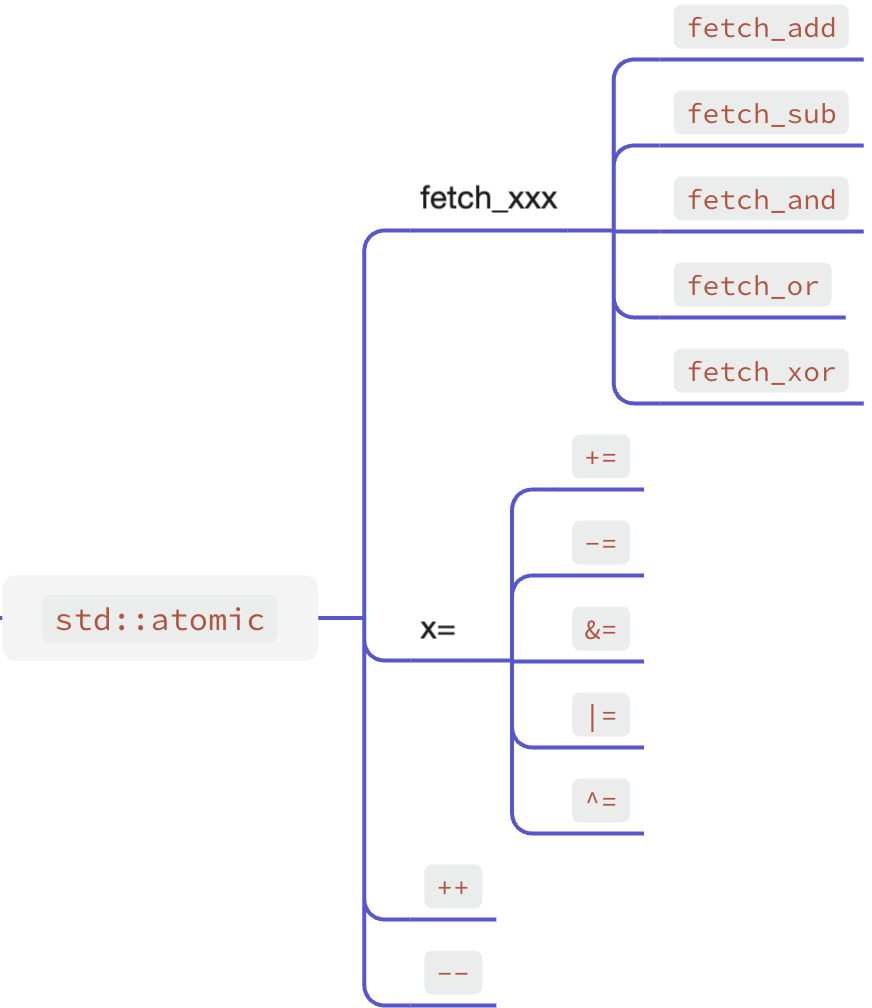C++ asynchronous and synchronous mechanisms
Asynchronization (Multithreading)
The first thing we need to do is understanding the correlations between multithreading and parallel computing.
Multithreading is one of the many ways to implement parallel computing.
Why do we need asynchronous mechanisms ?
If we excute some time-consuming operations in main thread, they will block main thread which causes the bad user experience.
An effective way to solve this problem is to use asynchronous mechanisms. Creating a child thread that is asynchronous with main thread and the time-consuming operation can be done by child thread, main thread can continue do its work.
The asynchronous mechanisms between main thread and child thread can improve parallelism and performance. But we need some mechanisms to adjust execution orders of multiple child threads to solve the resource competition issues and avoid data access conflict. That is synchronous mechanisms, it ensures the correctness of programs execution results by adjusting the exection order of multiple threads.
How do we implement asynchronous mechanisms
std::thread
C++11 provides thread support in language level,
std::thread example code
#include <iostream>
#include <thread>
#include <functional>
#include <chrono>
void func2() {
std::this_thread::sleep_for(std::chrono::seconds(2));
std::cout << "func2" << std::endl;
}
int main() {
std::function<void()> func1 = []() -> void {
std::this_thread::sleep_for(std::chrono::seconds(1));
std::cout << "func1" << std::endl;
};
std::thread t1(func1);
std::thread t2(func2);
std::cout << "thread executing" << std::endl;
t1.join();
t2.join();
return 0;
}
Why C++ use term "join" to represent blocking the current thread until the thread identified by *this finishes its execution ?
The term "join" in the context of threading comes from the concept of joining or combining the execution of multiple threads back into a single flow of control. When you call join() on a thread object, you are essentially saying that you want to wait for that thread to complete its execution before the current thread continues.
The above is the official explanation for term "join". But according to this statement, in my opinion, the usagemain_thread.join(son_thread)is more resonable.
So we can explain it from another aspect, i.e. visualization: Imagine threads as separate paths or streams of execution in a program. When you "join" a thread, it's as if you are waiting for that thread to merge or combine its results or progress with the current thread. This visual analogy helps in understanding the purpose of the function.
std::promise、std::packaged_task、std::async
They all can create an asynchronous operation.
std::future:std::futurecan help us to solve this problem, it has three states and three ways to get its state.
std::promise: It looks like the code promises it will provide a result in the future, at that time, you can get a result.
std::packaged_task: It looks like the code promise it will do something in the future, at that time, you can get a result.
We can note that the promise and packaged_task both mentions future, in fact, you both usestd::futureto provide a result.
std::promise example code
#include <thread>
#include <future>
#include <iostream>
int main()
{
std::vector<int> numbers = { 1, 2, 3, 4, 5, 6 };
std::promise<int> accumulate_promise;
std::thread child_thread([&]() {
int sum = 0;
for (std::vector<int>::iterator pointer = numbers.begin(); pointer < numbers.end(); pointer++) {
sum += *pointer;
}
accumulate_promise.set_value(sum);
});
std::future<int> accumulate_future = accumulate_promise.get_future();
// get() function only ensures that future has a valid result, but child thread maybe don't finish at this time. So we also need to use join() function
std::cout << "result=" << accumulate_future.get() << std::endl;
child_thread.join(); // wait for thread completion
return 0;
}
std::packaged_task example code
#include <iostream>
#include <future>
#include <functional>
int main() {
// auto sum = [](int a, int b) -> int {return a + b;};
std::function<int(int, int)> sum = [](int a, int b) -> int {return a + b;};
std::packaged_task<int(int, int)> task(sum);
std::future<int> result = task.get_future();
task(2, 9);
std::cout << "task result = " << result.get() << std::endl;
return 0;
}
std::async example code
The second way is convienter than std::thread, and them solve a problem of thread.
If we want to get the result of a child thread, maybe we need to use global variable. So c++ create a std::future to provide a mechanism to access the result of asynchronous operations. In other words, promise、packaged_task and async all can provide a future object to creator of asynchronous operations.
Synchronization
There are some common approaches to implement the synchronous mechanisms, they are
- semaphore
- mutex
- condition variable
- atomic
What is the relationship between semaphore、mutex and condition value ?
semaphore -> mutex
mutex + semaphore -> condition variable
condition variable + mutex -> semaphore
Why we need to use the synchronous mechanisms ?
When multiple threads or processes use the shared variables, writing at the same time will cause the wrong result.
We need to use the synchronous mechanisms to adjust different execution index of threads and processes.
How can we understand the role of mutex and atmotic ?
We can use mutex to wrap many statements and use atmotic to implement one operation.
And mutex is a heavy operation and atomic is a light operation, we ought to select the suitable tool to finish our work.
Locking (Mutex)

- Using common-style locks, which ought to be released manually by
this.lock()andthis.unlock()
These common-style locks have disadvantages, they must be released manually, if we forget this process, program will appear problems. So we can use the second type of locks.
- Using RAII-style locks, which can manage locks automatically. They like a package for common-style locks.
- The simplest way
Usingstd::mutexto create a lock object,this.lock()to lock this mutex,this.unlock()to unlock this mutex.
Atomic
What we need to do to get an atomic is just finish this subsitutation int counter = 0 -> std::atomic<int> counter = 0. Then we can use the counter as a ordinary variable. It look like the following code.
#include <iostream>
#include <thread>
#include <atomic>
int main() {
//int counter{0};
std::atomic<int> counter{0};
std::thread t1([&]() -> void {
for (size_t i = 0; i < 10000; i++)
counter += 1;
});
std::thread t2([&]() -> void {
for (size_t i = 0; i < 10000; i++)
counter += 1;
});
t1.join();
t2.join();
std::cout << "counter = " << counter << std::endl;
return 0;
}
Which operators does atomic support ?

Another two important functions are compare_exchange_weak and compare_exchange_strong, which are abbreviated as CAS(Compare And Swap) in many places. We can use them to implement above any one fetch_xxx functions.
Note
The performance of compiling programs in Linux and macOS is different, e.g. in Linux, we need to use the -pthread option when preprocessing and linking. But in macOS, we needn't use this option. The reason is that Linux uses the POSIX thread library and macOS uses the Grand Central Dispatch(GCD). The compiler in macOS will link GCD automatically, so we needn't link it manually.
Reference
a development process:
- use std::thread directly(when main thread ends, although son thread is excuting, it also ends)
- use std:🧵:join to command main thread to wait for son thread
- when son thread is used in function, if function ends, the thread object as a class, it has a deconstruction function, it will destruction the son thread, so you can use detach to avoid thread object to control the excution of son thread
- use global variable to store son thread created by function, and at the last of the main thread, use std:🧵:join to block the main thread until all son threads finish their execution.
- a problem of the forth way is that we need to excute the std:🧵:join manually. In the final analysis, thread is also a type of resource, so we can refer to the RAII thought, use a class to control this resource.



【推荐】国内首个AI IDE,深度理解中文开发场景,立即下载体验Trae
【推荐】编程新体验,更懂你的AI,立即体验豆包MarsCode编程助手
【推荐】抖音旗下AI助手豆包,你的智能百科全书,全免费不限次数
【推荐】轻量又高性能的 SSH 工具 IShell:AI 加持,快人一步
· 终于写完轮子一部分:tcp代理 了,记录一下
· 震惊!C++程序真的从main开始吗?99%的程序员都答错了
· 别再用vector<bool>了!Google高级工程师:这可能是STL最大的设计失误
· 单元测试从入门到精通
· 【硬核科普】Trae如何「偷看」你的代码?零基础破解AI编程运行原理